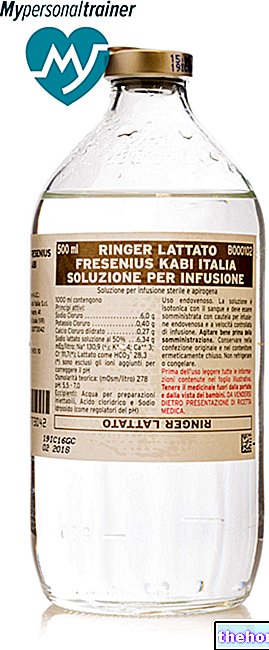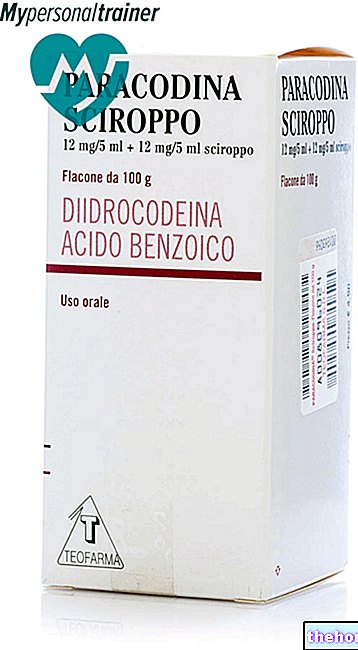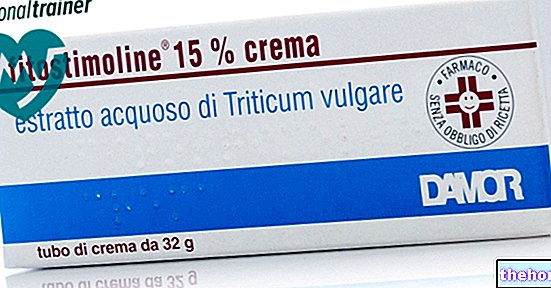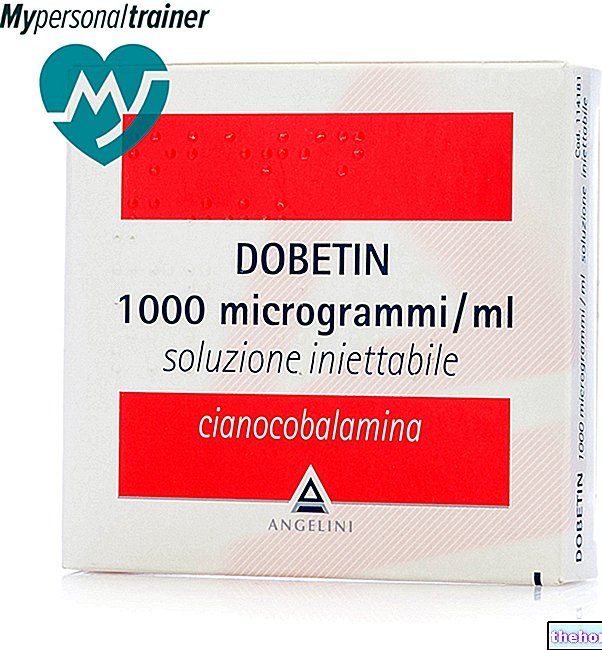Active ingredients: Nomegestrol (nomegestrol acetate)
Lutenyl 5mg tablets
Why is Lutenyl used? What is it for?
Pharmacotherapeutic group
Sex hormones and modulators of the genital system; progestogens.
Therapeutic indications
- Menstrual cycle disturbances (menometrorrhagia, secondary amenorrhea, functional uterine haemorrhage, especially in the period of premenopause)
- Dysmenorrhea
- Premenstrual syndrome
- Treatment of menopausal disorders (in association with estrogen to balance its effect on the endometrium)
Contraindications When Lutenyl should not be used
Known or suspected breast cancer. Hypersensitivity already known to the active ingredient of the specialty, previous thrombophlebitic and thromboembolic diseases, severe hepatic insufficiency. Lutenyl should not be used in pregnancy and is not suitable for prophylaxis of abortion.
Precautions for use What you need to know before taking Lutenyl
In case of uterine bleeding, use the product only after having ruled out an organic cause.
Caution in use must be exercised in case of previous myocardial or cerebral infarction, hypertension, diabetes, phlebitis and liver failure.
The use of Lutenyl in breastfeeding mothers is not recommended due to the passage of the substance into breast milk.
Interactions Which drugs or foods can modify the effect of Lutenyl
Not known.
Warnings It is important to know that:
Before initiating or resuming hormone replacement therapy (HRT), in addition to performing a general and gynecological examination (including breast examination and a Pap smear), the patient's personal and family medical history should be evaluated, in light of the contraindications and special warnings and precautions for use. It is necessary to exclude a pregnancy in progress.
During treatment, periodic specialist checks are recommended, the nature and frequency of which must be adapted to the patient and repeated breast examinations and / or mammograms should be conducted in line with the recommended control programs for healthy women, modified according to individual clinical needs.
Currently available clinical data (derived from the evaluation of data from fifty-one epidemiological studies) suggest that in postmenopausal women undergoing or undergoing hormone replacement therapy, there is a mild to moderate increase in the likelihood of breast cancer being diagnosed. . This may be due to both an early diagnosis in the treated patients, a real effect of HRT, and a combination of both.
The likelihood of breast cancer being diagnosed increases with duration of treatment and appears to return to baseline five years after HRT is stopped. Breast cancer diagnosed in patients who use or have recently used HRT would appear to be less invasive in nature than that found in untreated women.
In women between the ages of fifty and seventy who do not use HRT, about forty-five in every thousand people are diagnosed with breast cancer, with an increase related to age. It has been estimated that in women who use HRT to at least five years, the number of additional cases of breast cancer diagnosis will be between two and twelve for every thousand subjects, this in relation to the age at which the patients start the treatment and the duration of the same.
It is important that the physician discusses the increased likelihood of breast cancer diagnosis with the patient candidate for long-term therapy, evaluating it in relation to the benefits of HRT.
Patients with a family history of cancer and those who suffer or have suffered from the following conditions should be closely monitored:
- recurrent cholestasis or persistent itching during pregnancy;
- changes in liver function;
- kidney or heart failure;
- breast lumps or fibrocystic mastopathy;
- epilepsy;
- asthma;
- otospongiosis;
- diabetes mellitus;
- multiple sclerosis;
- systemic lupus erythematosus; - porphyria.
Due to the fact that thrombotic and metabolic risks cannot be totally excluded, the administration must be immediately suspended in case of ocular disturbances with partial or total loss of vision, diplopia, vascular lesions of the retina, venous or thrombotic thromboembolic accidents affecting vessels. peripheral, pulmonary, cerebral, headache of particular intensity.
The medicine is not contraindicated for people with celiac disease.
Dosage and method of use How to use Lutenyl: Dosage
Unless otherwise prescribed, 1 tablet per day from the 16th to the 25th day inclusive of the menstrual cycle.
To stop functional uterine bleeding 1 tablet per day for 10 days.
Overdose What to do if you have taken too much Lutenyl
Harmful effects from excessive doses of the drug have never been reported or expected.
Side Effects What are the side effects of Lutenyl
Changes in menstruation, amenorrhea, intercurrent bleeding.
Worsening of venous insufficiency of the lower limbs, possibility of the appearance of colostatic jaundice and itching. Exceptionally: weight gain, insomnia, hairiness, gastrointestinal disturbances.
The occurrence of any undesirable effect not described in this leaflet during treatment must be promptly reported to the treating physician or pharmacist.
Expiry and Retention
Warning: do not use the medicine after the expiry date shown on the package.
Other information
Composition
Each tablet contains:
- Active ingredient: nomegestrol acetate 5 mg
- Excipients: lactose, microcrystalline cellulose, glyceryl palmitostearate, colloidal silica
Pharmaceutical form and content
Tablets, box with 30 divisible tablets
Source Package Leaflet: AIFA (Italian Medicines Agency). Content published in January 2016. The information present may not be up-to-date.
To have access to the most up-to-date version, it is advisable to access the AIFA (Italian Medicines Agency) website. Disclaimer and useful information.
01.0 NAME OF THE MEDICINAL PRODUCT
LUTENYL
02.0 QUALITATIVE AND QUANTITATIVE COMPOSITION
Each scored tablet contains 5 mg of nomegestrol acetate
03.0 PHARMACEUTICAL FORM
Tablets
04.0 CLINICAL INFORMATION
04.1 Therapeutic indications
selective progestin of Lutenyl lends itself optimally to replacement therapy in all gynecological disorders related to luteal insufficiency.
• Menstrual cycle disturbances (menometrorrhagia, secondary amenorrhea, functional uterine haemorrhage, especially in the period of premenopause)
• Dysmenorrhea
• Premenstrual syndrome
• Treatment of menopausal disorders (in association with estrogen to balance its effect on the endometrium).
04.2 Posology and method of administration
Unless otherwise prescribed, 1 tablet per day from the 16th to the 25th day inclusive of the menstrual cycle.
To stop functional uterine bleeding 1 tablet per day for 10 days.
04.3 Contraindications
Known or suspected breast cancer. Hypersensitivity already known to the active ingredient of the specialty, previous thrombophlebitic and thromboembolic diseases, severe hepatic insufficiency. Lutenyl should not be used in pregnancy and is not suitable for prophylaxis of abortion.
04.4 Special warnings and appropriate precautions for use
Before initiating or resuming hormone replacement therapy (HRT), in addition to performing a general and gynecological examination (including breast examination and a Pap smear), the patient's personal and family medical history should be evaluated, in light of the contraindications and special warnings and precautions for use. It is necessary to exclude a pregnancy in progress.
During treatment, periodic specialist checks are recommended, the nature and frequency of which must be adapted to the patient and repeated breast examinations and / or mammograms should be conducted in line with the recommended control programs for healthy women, modified according to individual clinical needs.
Currently available clinical data (derived from the evaluation of data from fifty-one epidemiological studies) suggest that in postmenopausal women undergoing or undergoing hormone replacement therapy, there is a mild to moderate increase in the likelihood of breast cancer being diagnosed. . This may be due to both an early diagnosis in the treated patients, a real effect of HRT, and a combination of both.
The likelihood of breast cancer being diagnosed increases with duration of treatment and appears to return to baseline five years after HRT is stopped. Breast cancer diagnosed in patients who use or have recently used HRT would appear to be less invasive in nature than that found in untreated women.
In women between the ages of fifty and seventy who do not use HRT, about forty-five in every thousand people are diagnosed with breast cancer, with an increase related to age. It has been estimated that in women who use HRT to at least five years, the number of additional cases of breast cancer diagnosis will be between two and twelve for every thousand subjects, this in relation to the age at which the patients start the treatment and the duration of the same.
It is important that the physician discusses the increased likelihood of breast cancer diagnosis with the patient candidate for long-term therapy, evaluating it in relation to the benefits of HRT.
Patients with a family history of cancer and those who suffer or have suffered from the following conditions should be closely monitored:
- recurrent cholestasis or persistent itching during pregnancy;
- changes in liver function;
- renal or heart failure;
- breast lumps or fibrocystic mastopathy;
- epilepsy;
- asthma;
- otospongiosis;
- diabetes mellitus;
- multiple sclerosis;
- systemic lupus erythematosus;
- porphyria.
Due to the fact that thrombotic and metabolic risks cannot be totally excluded, the administration must be immediately suspended in case of ocular disturbances with partial or total loss of vision, diplopia, vascular lesions of the retina, venous or thrombotic thromboembolic accidents affecting vessels. peripheral, pulmonary, cerebral, headache of particular intensity.
In case of uterine bleeding do not use the product before confirming the diagnosis, excluding an organic cause.
Caution in use must be exercised in case of previous myocardial or cerebral infarction, hypertension, diabetes, phlebitis and liver failure.
04.5 Interactions with other medicinal products and other forms of interaction
Not known
04.6 Pregnancy and breastfeeding
The use of Lutenyl in pregnancy and in breastfeeding mothers is not recommended due to the passage of the substance into breast milk.
04.7 Effects on ability to drive and use machines
Absent
04.8 Undesirable effects
Changes in menstruation, amenorrhea, intercurrent bleeding. Worsening of venous insufficiency of the lower limbs, possibility of the appearance of colostatic jaundice and itching. Exceptionally: weight gain, insomnia, hairiness, gastrointestinal disturbances.
04.9 Overdose
Not known
05.0 PHARMACOLOGICAL PROPERTIES
05.1 Pharmacodynamic properties
Nomegestrol acetate is a synthetic progestin derived from orally active 19-nor-progesterone. The affinity of nomegestrol acetate for the progesterone receptor is 2.5 times higher than that of the natural hormone.
05.2 Pharmacokinetic properties
Administration of a single dose was followed by rapid absorption with a plasma peak 2 hours after dosing.
The half-life is 30 hours for the active ingredient and 60 hours also considering the metabolites.
Plasma protein binding is 97.7 ± 0.1%. Elimination occurs by glucurono- and sulfur conjugation mainly via the faecal route (67.1%). Steady-state is reached after 5 days of treatment.
The good availability after oral administration and the long half-life allow only 1 daily administration.
05.3 Preclinical safety data
The LD50 of nomegestrol acetate in mice and rats was 2 g / kg after oral administration and 2-3 g / kg after intra-peritoneal administration.
Subacute and chronic toxicity studies up to 52 weeks in rats showed typical effects of progestogens.
The same applies to fetal toxicity and embryotoxicity tests. Nomegestrol acetate is neither teratogenic nor mutagenic.
In the various bio-pharmacological investigations, nomegestrol acetate did not demonstrate any androgenic, anabolic, estrogenic, glucocorticoid or mineralocorticoid activity. No interference with glucose metabolism and water and electrolyte balance has been demonstrated. Cardiovascular, hepatic or metabolic tolerability is excellent.
06.0 PHARMACEUTICAL INFORMATION
06.1 Excipients
Lactose, microcrystalline cellulose, glyceryl palmitostearate, colloidal silica.
06.2 Incompatibility
Not known
06.3 Period of validity
5 years
06.4 Special precautions for storage
None
06.5 Nature of the immediate packaging and contents of the package
PVC / aluminum blister
Box with 30 tablets in blister
06.6 Instructions for use and handling
None
07.0 MARKETING AUTHORIZATION HOLDER
ratiopharm Italia S.r.l. - Piazzale Luigi Cadorna, 4 - 20123 Milan.
Dealer for sale
Teva Italia S.r.l. - Milan
08.0 MARKETING AUTHORIZATION NUMBER
AIC n. 028199014
09.0 DATE OF FIRST AUTHORIZATION OR RENEWAL OF THE AUTHORIZATION
Date of first authorization: 19 May 1993
Date of renewal of the authorization: 20 May 2008
10.0 DATE OF REVISION OF THE TEXT
February 2016




























